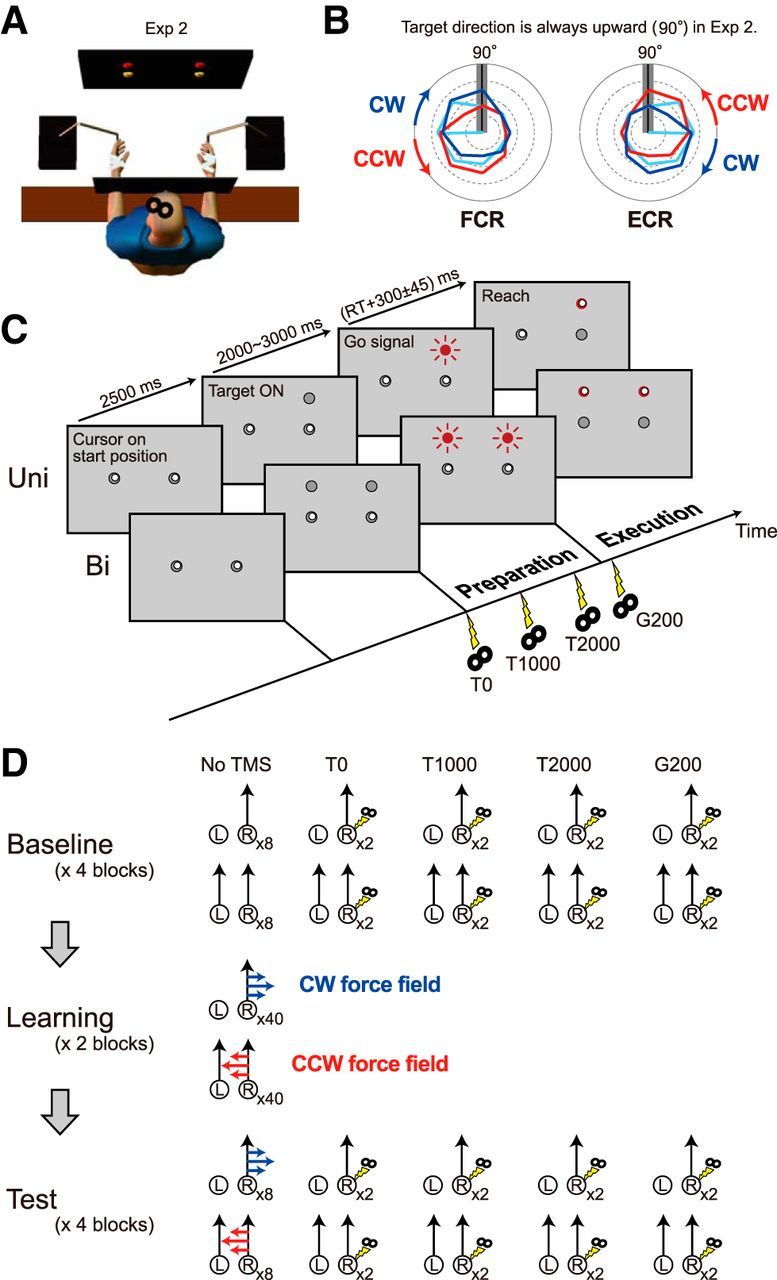Figure 2.

Experimental setup and procedure for Experiment 2. A, Participants alternated unimanual and bimanual movements. B, Based on the results of Experiment 1, tuning curves of MEP (cyan lines) in polar plot were predicted to rotate CW and CCW after motor adaptation to the CW force field (blue lines) and to the CCW force field (red lines), respectively. This possible rotation could increase or decrease the MEP for the FCR or ECR, respectively, for the upward (90°) direction (gray bar). C, Trial flow for Experiment 2. TMS was applied at target appearance (T0); 1 s (T1000) and 2 s (T2000) after target appearance; and 0.2 s after the go signal (G200). D, Task procedure for Experiment 2. One or two targets alternately appeared only at the upward (90°) position. During the learning and test sessions, CW and CCW force fields were imposed on unimanual and bimanual movement, respectively.
